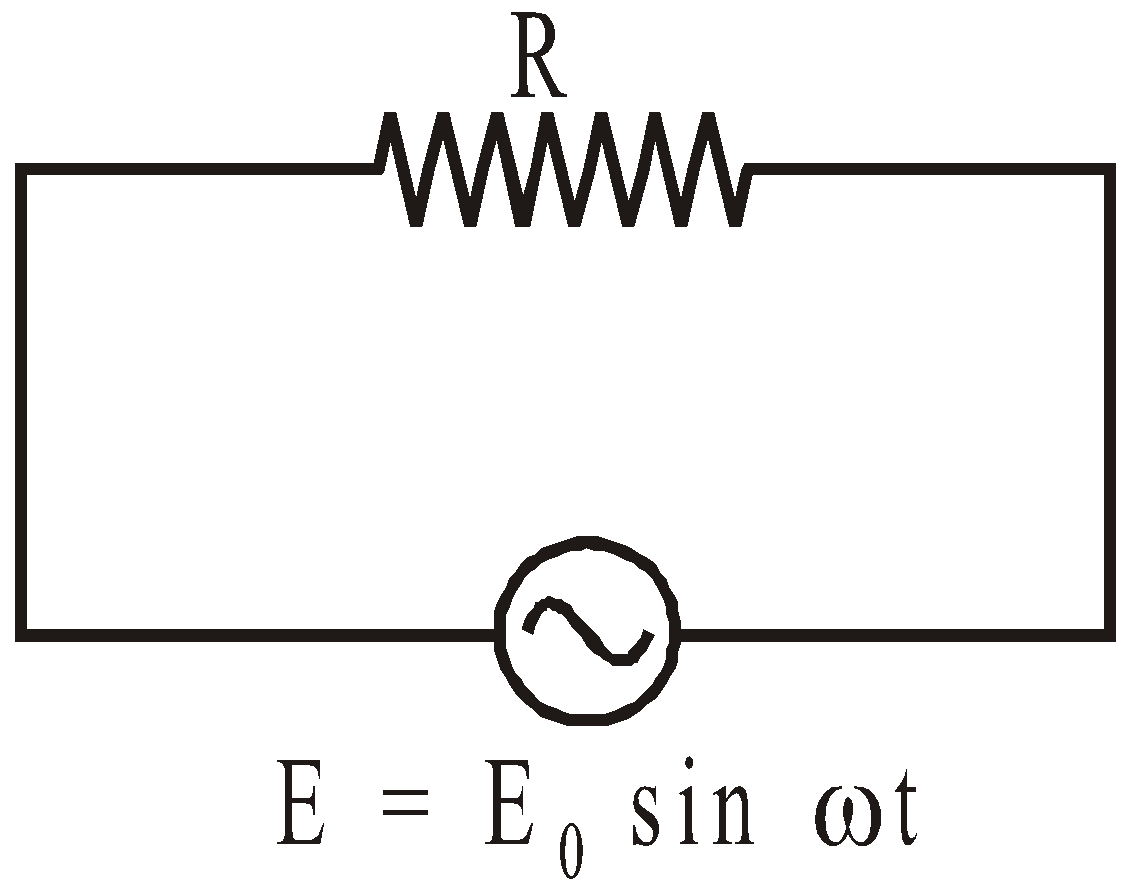In this article, we will discuss, an AC circuit that contains a resistor only. So let’s get started…
AC circuit containing resistor only
As shown below, suppose only a resistor of resistance $R$ is connected to a source of alternating emf $\mathcal{E}$ given by $$\mathcal{E}=\mathcal{E_0}\sin\omega t\qquad…. (1)$$ Such a circuit is known as a purely resistive circuit.

If $I$ is the current in the circuit at instant $t$, then the potential drop across $R$ will be $IR$. According to Kirchhoff’s loop rule,
| $$\text{Instantaneous emf of the source}=\text{Instantaneous potential drop across the resistor}$$ |
Or $$\begin{aligned}\mathcal{E_0}\sin\omega t &= IR\\I&=\frac{\mathcal{E_0}}{R}\sin\omega t\\I&=I_0\sin\omega t \qquad…. (2)\end{aligned}$$
where $\displaystyle{I_0=\frac{\mathcal{E_0}}{R}=}$ the maximum or peak value of AC
From equations (1) and (2), we note that both $\mathcal{E}$ and $I$ are functions of $\sin \omega t$. Hence the emf $\mathcal{E}$ and current $I$ are in the same phase in a purely resistive circuit. This means that both $\mathcal{E}$ and $I$ attain their zero, minimum and maximum values at the same respective times. This phase relationship is shown graphically below. The following figure shows the phasor diagram for the resistive AC circuit. Both the phasors $\overrightarrow{\mathcal{E}}$ and $\overrightarrow{I}$ are in the same direction, making the same angle $\omega t$ with the x-axis. The phase angle between them is zero.
Read Also
Frequently Asked Questions – FAQs
What is an AC circuit containing resistance only?
A circuit that contains only a pure resistance (ohms) in an AC circuit is called a Purely Resistive AC Circuit. From a technical standpoint, this circuit does not contain capacitance or inductance.
Can resistors be used in AC circuits?
Any resistance heating element such as electric ranges, toasters, kettles, irons, water heaters, etc. can be classified as a resistance AC circuit and we use resistances in AC circuits to heat our homes and water.
What happens when a resistor is connected to AC?
The change in direction of the current in the AC supply does not affect the behavior of the resistors. So the current in the resistor rises and falls according to the voltage as it goes up and down. The voltage and current in the AC resistance circuit will reach the maximum, then drop to zero while reaching the minimum.
What do you mean by AC circuit?
An alternating current (AC) is an electric current that periodically reverses direction and constantly changes value over time, unlike a direct current, which only flows in one direction. Power supply companies and households have been using sinusoidal currents and voltages for electrical energy for many decades.
Why AC is used instead of DC?
AC is much easier (and therefore cheaper) than DC to step the voltage up and down (using a transformer) and can be done more efficiently than much more expensive and costly DC systems. That is why alternating current is used for power transmission.
Stay tuned with Laws Of Nature for more useful and interesting content.

